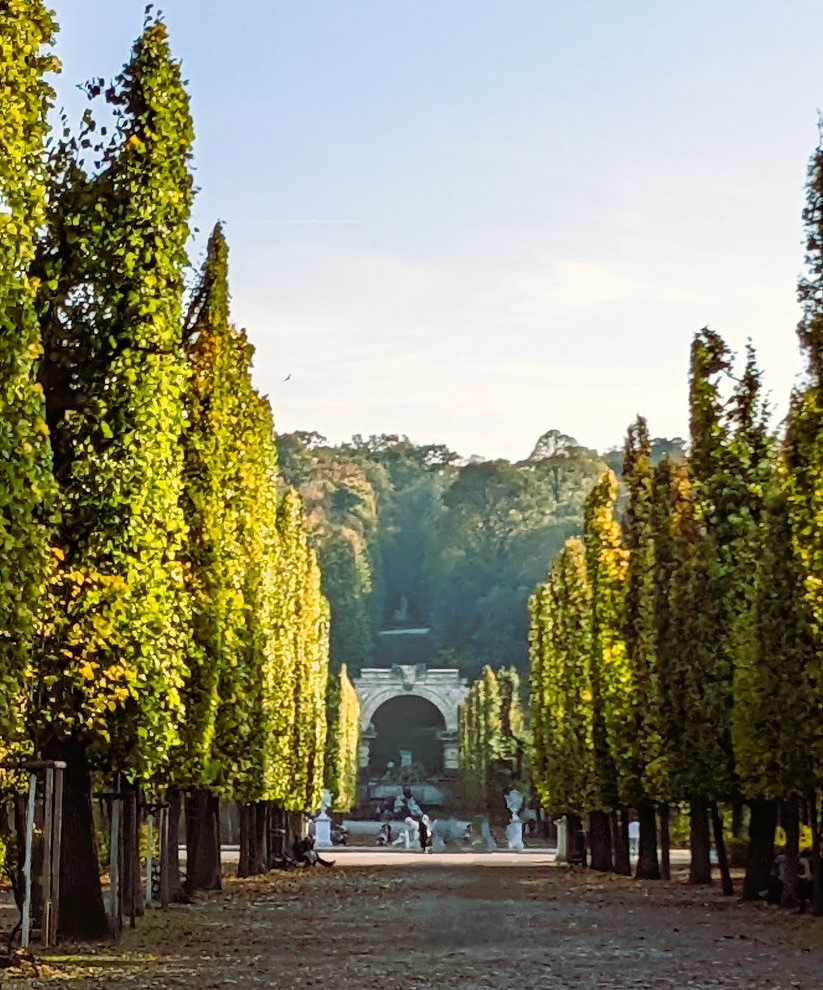
Habsburg Opulence Reigns at the Schonbrunn
The whole family felt like royalty as we paraded ourselves through the palace that Emperor Leopold I of the Habsburg dynasty built in the late 17th century. Making our way up grand staircases covered in velvet, or strolling through long formal hallways into opulent ballrooms overlooking the enormous grounds, we all envisioned ourselves as leaders of the Austro-Hungarian empire, ruling over half of Europe in style. Okay, maybe only some of us were dreaming of a life of royalty. The point is, Schönbrunn Palace, which is now a beautiful museum detailing the rise and fall of the Habsburg dynasty and all the juicy details in-between, is a wonderful place to get lost in a history that is not that long ago. A time when Europe was ruled by monarchs.



Empress Maria Teresa Takes Over
Schönbrunn’s true royal appearance didn’t come about until Franz Stephan (Francis I, Holy Roman Emperor) and Maria Theresa came into power. After using the palace as their summer residence for a period, Maria Theresa made Schönbrunn her primary residence, initiating a series of extensive renovations that would define the palace’s current appearance. Maria Theresa definitely left her mark on the palace, and the museum does a great job of detailing what an extraordinary life she lived and the force of nature she was.
When her father, Emperor Charles VI, died on 20 October 1740, she was expected to cede power to her husband, Emperor Francis I, and her eldest son, Emperor Joseph II, who were officially her co-rulers in Austria and Bohemia, but she refused. Never officially crowned Empress, she ruled as an autocratic sovereign and is the only female ruler in the House of Habsburg.
Maria Theresa is considered by most historians to be a strong and successful ruler, although her hardline demeanor, mixed with some of the policies she supported, such as torture, are considered harsh, even for her time.
She did have numerous impactful accomplishments during her 40-year reign, such as strengthening Austria through institutional, financial, medical, and educational reforms, along with the development of agriculture and the overhauling of Austria’s military. But as a ruler who ruled at the beginning of the era of “enlightened absolutism,” where the focus was a brand new approach toward governing, many of her policies were not in line with the ideals of the Enlightenment.
And if her life wasn’t already chock-full of enough intrigue, Maria Theresa was the mother of Maria Antonia, who would later become Marie Antoinette after marrying Louis Dauphin of France. In a testament to her strength, Maria Theresa gave birth to 16 children over 20 years.
The Gardens and a Zoo
Maria Theresa was also known for her love of nature and gardening. Under her direction, the palace gardens were expanded and transformed into a beautiful landscape worthy of an Empress. The Tiergarten Schönbrunn, the world’s oldest continuously operating zoo, was also established within the palace grounds during her reign.
The palace was gorgeous, but the palace gardens were our favorite part. The grounds are so vast, and at varied elevations, that numerous trails lead in a multitude of directions.
We were there in the fall, so the vibrant autumn colors were evident in areas, making the gardens even more visually appealing. There are numerous fountains, ponds, elaborate sculptures, formal lawns with inlaid flower designs, a bird sanctuary, and everything else you would expect in royal palace gardens. There is even a garden labyrinth you can make your way through, but we opted not to go through it this time as we were already lost in the public gardens.



